Narrative and Photos Submitted by
THE FAMILY OF ALIJAH AKBARALI AND ALIJIANI KULSUMBAI MOHAMED HAMIR
(Special to Barakah)
“On November 4th, 1966, as Mawlana Hazar Imam’s plane circled the Iringa airport, there was palpable excitement as the leaders of the Jamat anxiously awaited the arrival of our beloved Imam. Mawlana Hazar Imam had taken a break on his extended tour of East Africa to return to Europe to attend to some personal matter. Iringa was the second stop on his return visit from Europe. As the ebullient Imam emerged from his plane, without regard to his evident infirmary, with plastered foot and a walking cane, Jamati leaders’ ecstatic emotions turned to one of unexpected concern. But the Imam was quick to calm the leaders’ fears about his infirmed foot.” — Excerpt from narrative, below.
MOMENTOUS NEWS OF MAWLANA HAZAR IMAM’S VISIT
In September of 1966, our father, Alijah Akbarali Mohamed Hamir, was the Mukhi of the Iringa Jamat when he received a fortuitous message that the Iringa Jamat had long been praying for and anxiously awaiting. With great fanfare, happiness and gratitude, he and Kamadia Saheb Fatehali Karim Lalji, announced to the Jamat that Mawlana Hazar Imam, His Highness the Aga Khan, would bless the Jamat with two nights, three days visit to Iringa in November. The ecstatic Iringa Jamat observed and celebrated the announcement with Shukrana prayers and full fledged Khushali.
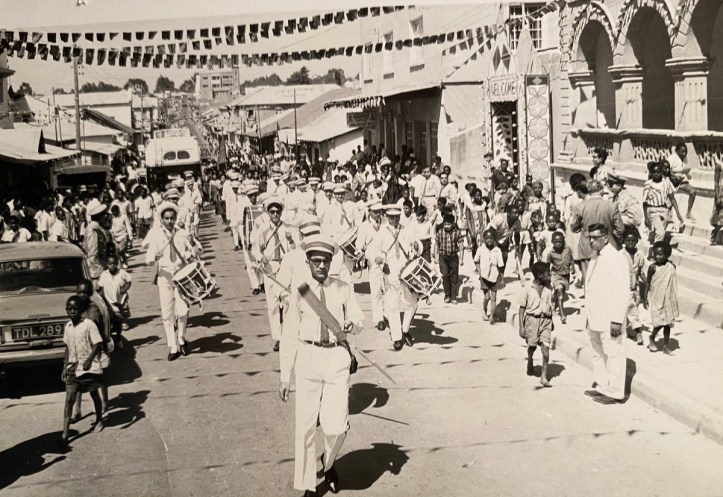
Mawlana Hazar Imam undertook an extensive tour of East Africa Jamats in his upcoming 10th year of his Imamat. The purpose of this strenuous, several weeks long tour was to conduct the various religious ceremonies, and importantly also to assess the Jamats’ progress, needs and deliver Imamat guidance for both spiritual and material upliftment of the Jamat.
IRINGA AND THE SOUTHERN HIGHLAND REGION

Our Hazar Imam’s visit to Iringa represented an outstanding opportunity for the Iringa Jamati leaders to showcase the Jamat’s growth, achievements and large contribution towards Southern Highland Region’s economic growth, vitality and establishment of social services and several civil society programs.
The history of the Iringa region, and indeed that of Tanzania, is incomplete without the mention of the role of heroic and influential Mkwawa family dynasty. The Iringa Region had achieved both high visibility and notoriety in Tanganyika during the German colonial period when in 1894 the renowned Wahehe tribal Chief Mkwawa waged a war of resistance against the German encroachment and colonialization of the Iringa region. After initial success in defeating the German military forces and a four-year war of attrition against the mighty German forces, Chief Mkwawa chose to commit suicide rather than face humiliation of capture.
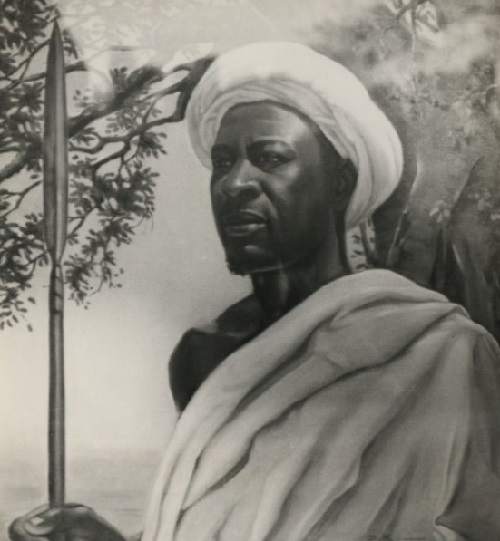
In 1954, British Governor Edward Twinning of Tanganyika, after many years of effort, was able to repatriate Chief Mkwawa’s Skull which the Germans in 1899 had decapitated and exhibited in a museum in Berlin, Germany. The return of the Skull was an important symbolic event signifying both the heroism and tribute for the sacrifice for freedom of the Chief and his dominant Wahehe Tribe of Iringa, and for the country as a whole. The event was observed in Iringa with a high profile and somber ceremony attended by the Governor as well as leading regional and national personalities. The Skull now resides in a small museum in the Village of Kalenga, a district of Iringa. This historical event associated with Iringa looms high in the history of Tanzania.
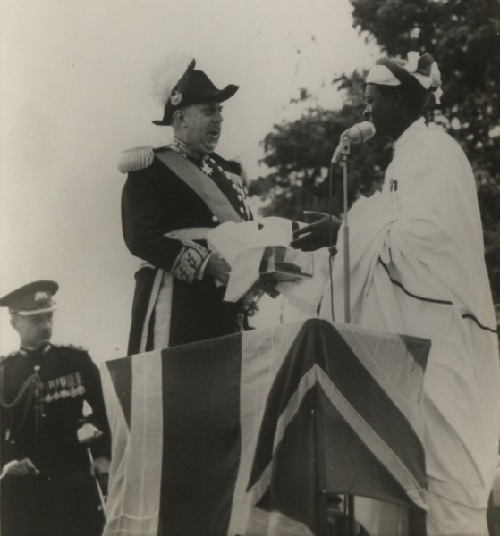
A significant and interesting anecdote to the Mkwawa Chiefdom is the relationship that developed with a member of our family. Chief Mkwawa’s grandson, Chief Adam Sapi Mkwawa (1920-1998), had the recognition and political influence to become the First Speaker of the House of independent Tanzania’s parliament for more than 25 years over two terms. But prior to his Speakership, he had, through business relationship, befriended the family of our uncle Bhimji Asser Sachedina. Our aunt Sikina (Fuima to us) who had played a major role in our grandfather’s Iringa Jamatkhana project and his business, had developed a close friendship with the Chief and his family. Indeed, Chief Adam had come to consider her as his sister! Our aunt, specifically, had developed such trust with the Chief that the Sachedina family extended significant open trade credit to his seasonal farming financing needs.
This lasting mutual trust, affection and friendship between the two families was one of the true examples of positive cross ethnic relationships in the multicultural society of Iringa. Also, the success of this relationship and goodwill resulted in enhanced business and commerce relationship between the Chief’s Wahehe tribe and many of the Ismaili owned businesses in Iringa. Even after he became the Speaker of the parliament, Chief Adam Sapi frequently made a point of visiting the Sachedina family during his home District visits to Iringa. Through her empathy and compassion for peoples of all races, we are proud that our aunt Sikina contributed to raising the profile of our Ismaili community in Iringa.
Following World War I (1914-1918), the German defeat led to Tanganyika being a trust territory administered by the British. The first phase of Iringa’s prominence started in the 1930’s with construction of Roman Catholic Mission complex including a beautiful church, school and medical clinic facilities in Tosmaganga, a village 10 miles from Iringa. Importantly also was the construction of the high-profile towering Ismaili Jamatkhana with schooling and hostel facilities on the main street of Iringa. Establishment of these two iconic monuments, along with excellent weather and strategic location of Iringa in the Southern Highlands, were to be large catalyst for attracting both capital investments and peoples of many races to the region.
ISMAILI COMMUNITY AND IRINGA
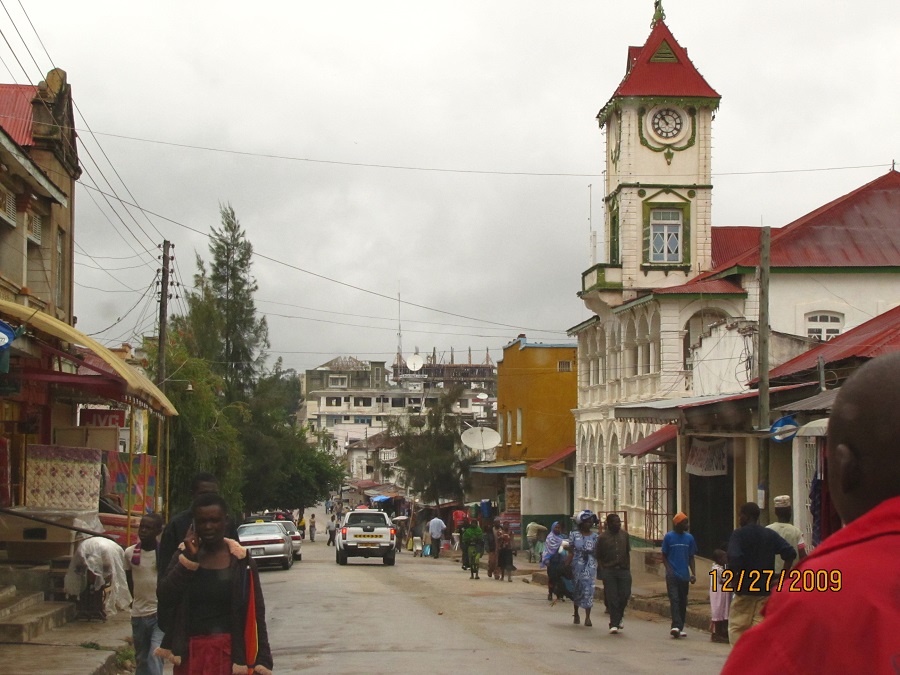
Following the establish of the Jamatkhana in 1933, in the next three decades the Ismaili community, guided by the Imamat institutions, commenced a program of development, prominent among which were establishment of the Aga Khan School system that included new primary and secondary schools, a school boarding house facility, and a modern medical clinic and hospital. These community social services infrastructure, which were open to the general population, led to major expansion of the community from 150 to 1200 members in some 30 years from the establishment of the Iringa Jamatkhana. The community had also launched several civil society programs such as affordable housing scheme, purchasing cooperatives and promoted the services of the Aga Khan Diamond Jubilee Trust including lending, savings, insurance and investment schemes.
By mid 1960s, the Ismailis had become the largest non-native population of Iringa with 1200 hundred members out of the total non-native population of some 2000. Ismailis’ dominance in trade, commerce, transportation and farming industries was significant. In particular, the establishment of the fully fledged schools including the boarding facilities brought education to remote region of the country, and in the process making Iringa and the Aga Khan school system important and unique education center in East Africa. For the first time ever, the town of Iringa had a high quality and affordable secondary education that was open to all communities. Providing boarding facilities to youths from all over the region, and retaining the youth of the town in the expanded local school system added significant vibrancy to the community, and to the region’s economic and social life.
Concurrently with above developments, and adding validation to Iringa’s prominence as a key educational center, in 1950s, the British colonial government had established in Iringa, a prominent and exclusive private secondary boarding school catering mostly to the white expatriate community of East and Southern Africa. The St. Michael and St. Georges School of Iringa, after Tanzania’s independence, was to become The Mkwawa Secondary School, a public educational facility.
MAWLANA HAZAR IMAM’S IRINGA VISIT
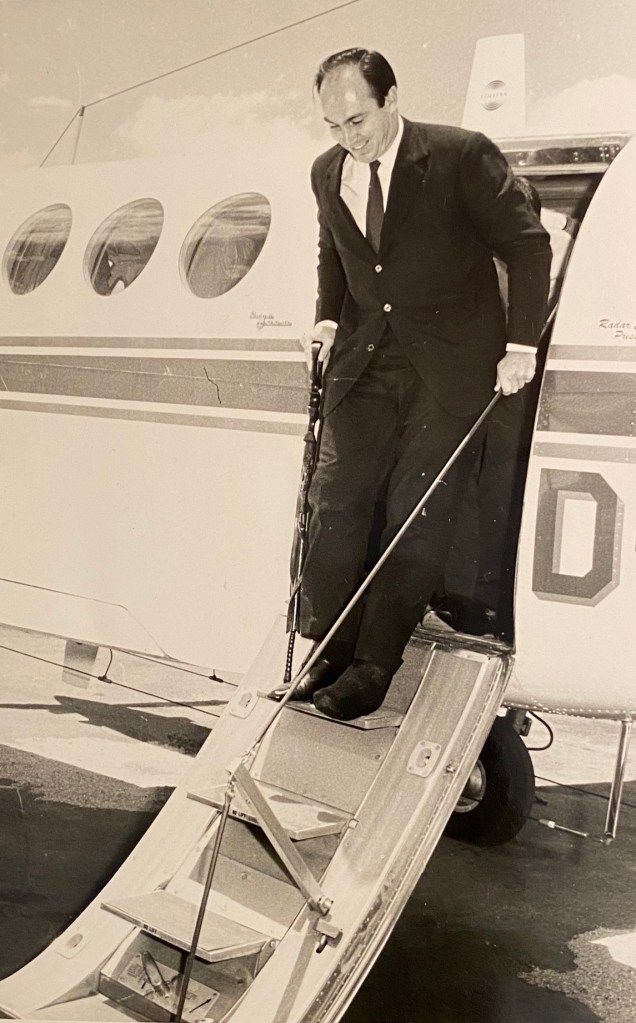
Thus, Iringa by mid 1960s, was well positioned to be one of the leading regions of the country to take on its next phase of development which began to attract more investments in other industries such as mining, road and rail transportation hub for southern half of the country, and light consumer product industries. With the resulting emergence of Iringa as a prospective economic power-house for the country, Mawlana Hazar Imam’s three day visit to Iringa foretold the excitement and anticipation of the importance the Imamat had placed on this region, and the continued contribution of the Iringa Ismaili community to the economic advancement of the country.

On November 4th, 1966, as Mawlana Hazar Imam’s plane circled the Iringa airport, there was palpable excitement as the leaders of the Jamat anxiously awaited the arrival of our beloved Imam. Mawlana Hazar Imam had taken a break on his extended tour of East Africa to return to Europe to attend to some personal matter. Iringa was the second stop on his return visit from Europe. As the ebullient Imam emerged from his plane, without regard to his evident infirmary, with a plastered foot and a walking cane, Jamati leaders’ ecstatic emotions turned to one of unexpected concern. But the Imam was quick to calm the leaders’ fears about his infirmed foot. The Jamat was to learn that his prior foot injury from a skiing accident had flared up as a result of his intense travel schedule, necessitating return to Europe for consultation with his orthopedist and resulting in his plastered foot. His orthopedist advised our Mawla to refrain from further travel to avoid stressing his foot. Our Imam would have none of it! His Jamats’ were waiting for him and he was not going to disappoint them! And so, we saw our Imam ease down the plane gangway in to the hearts of the Iringa leaders and his Jamat. This was one of the more poignant moment of Mawlana Hazar Imam’s visit to Iringa: the love of the Imam for his Jamat notwithstanding risk to his personal well-being, and the love and concern of the Jamat for the Imam.
Mawlana Hazar Imam was accompanied by Mr. Yusuf Bharmal, President of Southern Highland Regional Council; Mr. Abdulla Tejpar, President of the National Council of Tanzania, and Diwan Sir Eboo Pribhai, President of the Supreme Council for Africa.
Over the next three days, Mawlana Hazar Imam despite his discomfort, conducted hours of religious ceremonies, personally blessing every one of the over 1500 member congregation including Jamats from around the region. He also conducted marriage ceremonies, providing guidance to students and the Jamat on spiritual as well as worldly matters.


Besides his extensive involvement with the Jamat, he was also the guest of the honor of the Regional Commissioner of the Iringa Region, Rt. Honorable Mr. Chamshama, that included a luncheon and foundation laying ceremony for a sport complex to be built by the government. Unfailing as our Imam always does, he made a sizeable donation towards the project. Later that evening, the Jamati leaders hosted a banquet in the honor of our Imam. Appropriately, the banquet was held in the social/dining hall of the Aga Khan Boarding School. Local political, other community and religious leaders were present as guests of the Iringa Jamat. Our Imam and the Ismaili community of Iringa was profusely recognized for the outstanding contribution to the development of the region through the civil society and the social services institutions the Ismaili community had established for the public good.
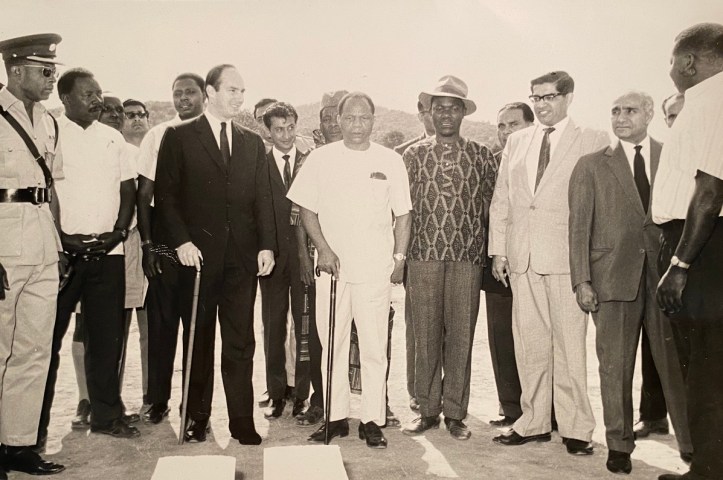
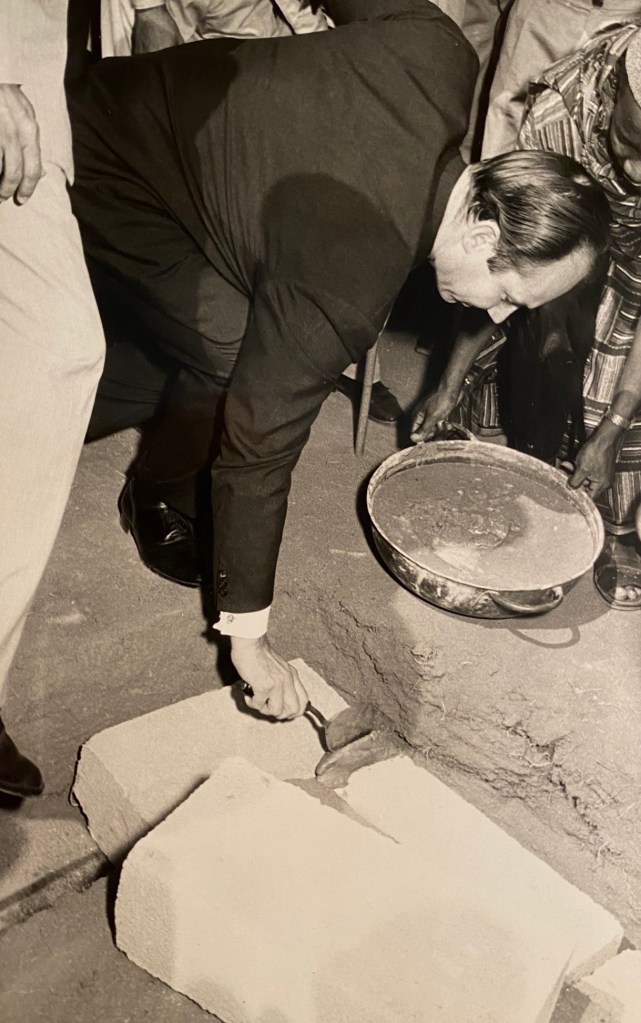
During his visit to Iringa, Mawlana Hazar Imam stayed at the residence of Kamadia and Kamadiani Fatehali and Jennybai Karim Lalji. This residence was part of the Aga Khan Housing Scheme initiative in Iringa. While there were other larger and more exclusive residences that the leadership had evaluated for our Imam’s stay, the choice of the Lalji residence was fitting tribute to the value of the housing scheme, and display of humility reflective of our Imam’s disposition. Once again, during his three day stay at the residence, the members of the Iringa Jamat had the outstanding privilege of serving for our Imam’s comfort and wellbeing.
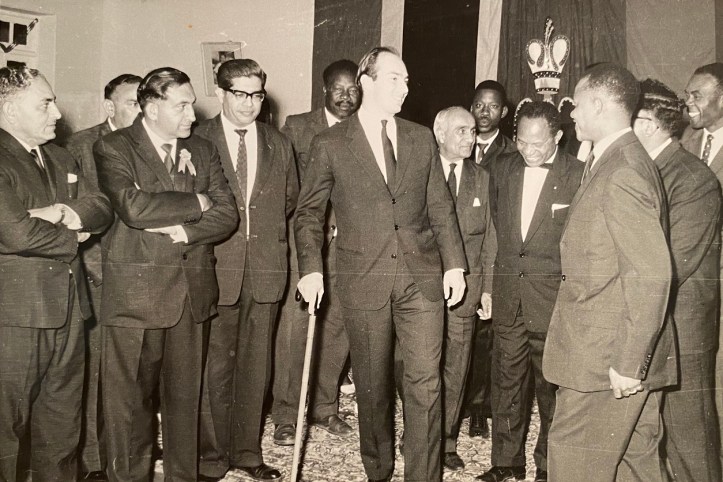
The three days jubilations and the heartwarming physical presence our Imam had to come to end for the Iringa Jamat. Sensing the somber mood of the Jamat, our Imam conveyed his utmost happiness in being with his Jamat, his happiness and pride in the progress and the contribution the Iringa Jamat was making in the development of the region and the country. He showered bountiful blessings again and again to the Jamat, the leaders and the volunteers for their outstanding service to Jamat, and for making his visit to Iringa a memorable one. He reminded the Jamat that while he was physically leaving, his Jamat will always remain fondly in his heart.
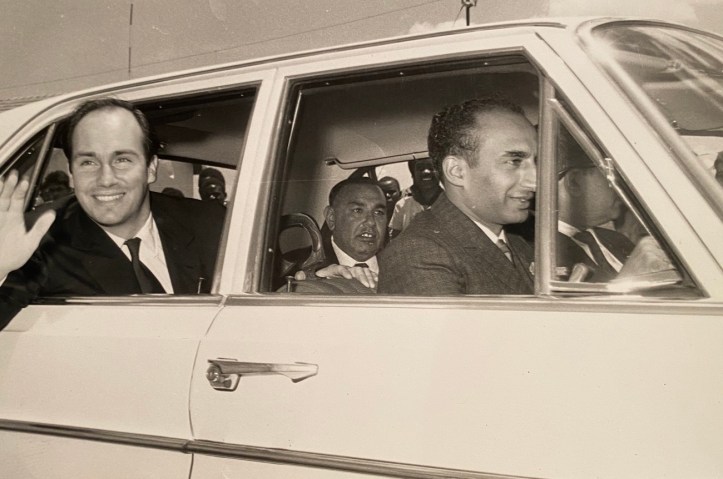
As our Mawla bid farewell to the Jamat, his final words to our father, the Mukhisaheb of Iringa, were “Take Care of My Jamat!”. This affectionate admonishment by the Imam to our father was deemed as a welcome trust in him by the Imam, and a ringing reminder to never forget the Imam’s message and guidance.
FAMILY PERSPECTIVE

For our Hamir family, and particularly for our parents Akbarali and Kulsum, the news and the visit of Mawlana Hazar Imam during their term as the Mukhi and Mukhiani of the Iringa Jamat was culmination of yet another opportunity of blessings our family had been fortunate to receive in service of the Imam and the Jamat. For our father, as Mukhi, to lead the Iringa Jamat in welcoming our beloved Mawlana Hazar Imam to the magnificent Jamatkana that his father, Mohamed Hamir Pradhan, had built some 33 years earlier and donated to Imam of the Time, was an extraordinary blessed event of his life. For our parents to have this opportunity to serve the Imam continued the family’s generational tradition of service of our forefathers: great-grandfather Hamir Pradhan and grandfather Mohamed Hamir Pradhan. Their service has been a source of immense pride and inspiration for the current generation of our family who have variously upheld the tradition of service to the Imam and his Jamats. These opportunities for our family are truly the “Blessings of Our Forefathers”.
Date posted: September 21, 2020.
Last updated: September 24, 2020 (typos).
_____________________
Barakah welcomes your feedback. Please complete the LEAVE A REPLY form below or send your comment to simerg@aol.com if you don’t see the comment box. Your letter may be edited for length and brevity, and is subject to moderation.
Before departing this website please take a moment to visit Barakah’s Table of Contents for links to more than 200 pieces dedicated to Mawlana Hazar Imam, his family and the Ismaili Imamat.
This website, Barakah, is a special project by http://www.Simerg.com and is dedicated to the textual and visual celebration of His Highness the Aga Khan and members of his family, as well as the Ismaili Imamat.
What a beautiful piece of history your father and grandfather have been a part of and left you all with this legacy. What is even more inspiring is that you maintained the records, including photos and the history of the city which is amazing. May your family continue to be blessed.
LikeLiked by 1 person
Thanks for sharing this detailed inspirational write up. I felt so proud of you all. And grateful that your family was blessed with this unique opportunity to serve the Imam of the Time.
I did know that your grandfather had built the Jamatkhana but I did not know your fuima’s contribution in developing such good relationship with the local community. It’s heart warming to know about this. And I was a history teacher at that time. So reading about Chief Mkwawa of Iringa and his resistance against the German gov’t etc felt so nostalgic. And wow! All along your family was in the background providing support to him. Really remarkable.
Mawlana Hazar Imam was so happy.
Thanks once again for sharing this. And I am going to share this with some family members
Love & prayers
Anar
LikeLiked by 1 person
Just a wonderful masterpiece! Your parents ( rest their souls in eternal peace) would have been so proud. Your family is so blessed. This piece of history will remain for generations in ‘Hamir’ family.
Take care, love
Nadia
LikeLiked by 1 person
It was with an enormous sense of pride and happiness that I read the article.
What a blessing!
I hope and pray that the Barakat from what your (our 😊 ) family has done there is rewarded many times. You have such a rich history there.
I trust that you and the family are doing well, particularly during these trying times. Stay safe.
With best wishes,
Alnoor (Zera masi’s)
LikeLiked by 1 person
Great article! Such great details and very well written. Nice to read our families history!!
LikeLiked by 1 person
Absolutely beautiful and well edited piece of writing about our Iringa Jamaat. I’m overwhelmed by your sharing. Thanks and keep us informed about other places of our Hazar Imam’s visits in Tanzania.
LikeLiked by 1 person
Historically moving and emotionally charged piece! I was deeply touched by the photos of our Imam-e-Zaman, despite his plastered foot from a skiing accident, showing great love and devotion to the Jamaat for this trip. Love the historical significance and the importance of the Aga Khan Jamat Khana, schools and hostels at that time. It is so awe-inspiring to think that this was just ten years into his Imamat! I was not even born. What a great legacy…we should be proud and sincerely grateful for his countless hours.
LikeLiked by 1 person
Very interesting and informative article. I had no knowledge of Mawlana Hazar Imam’s visit to Iringa in November 1966.
We were so excited regarding Mawla’s visit to Kampala, Uganda, in December of the same year. For me, it was a double celebration as we got married December 1, 1966 in the presence of Hazar Imam & with his Special Blessings. Sukhar.
The Hamir family are very Blessed.
LikeLiked by 1 person